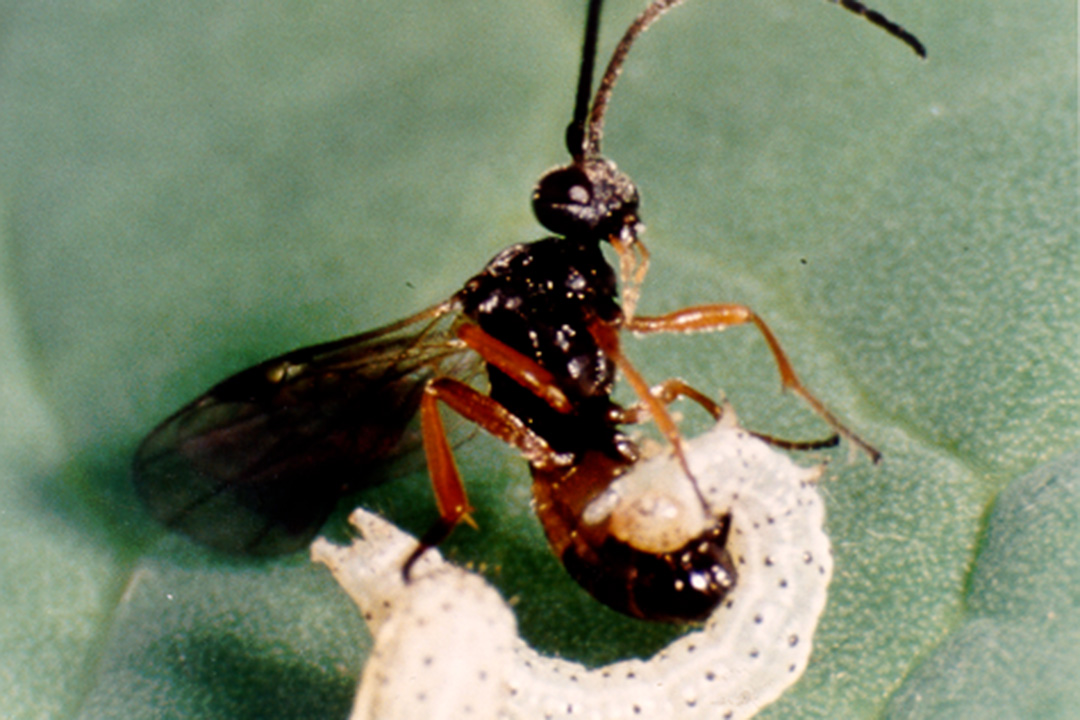
Caterpillars borrow weapons from viruses in battle against parasitic wasps: USask research
New research found caterpillars defend themselves against parasitic wasps using weapons also found in another enemy—viruses.
Exactly how the caterpillars are winning this tiny evolutionary arms race is the subject of an article just published in the journal Science by an international research team including scientists from University of Saskatchewan (USask).
“The objective was to determine the underlying molecular mechanism that allows some viruses to prevail,” said Dr. Martin Erlandson (PhD), USask adjunct professor and lead investigator of the Canadian component. “We identified insect-specific viruses that encode proteins that inhibit the development of competing parasites.”
In lepidopterans, a category of insect which include butterflies and moths, viruses specific to the insects create a protein which kills off or stunts the growth of the larvae of some parasitic wasps.
Erlandson also identified similar genes to produce the parasite killing protein in caterpillars, suggesting that multiple horizontal gene transfer events occurred where DNA for different toxic proteins was transferred between viruses and from viruses to the caterpillar host.
“Large populations of insects can be the targets of multiple parasites and pathogens resulting in a biological arms race where parasite and pathogen compete for the same host as well as the host evolving defences against these agents,” Erlandson said.
The researchers found that northern armyworm—an insect potentially devastating to maize, sorghum, and rice crops—when infected with entomopoxvirus, were lethal to the larva laid by Cotesia kariyai, their most common parasitic wasp adversary, as well as other closely-related varieties of wasps.
A better understanding of how viruses and parasitic wasps interact could present new, improved strategies for environmentally sustainable insect pest control through the combined use of viruses and parasites, Erlandson said.
The research team also involved former USask doctoral biology student Dr. Edyta Sieminska (PhD), researchers from Agriculture and Agri-Food Canada, as well as researchers from Spain’s University of Valencia, Korea’s Andong National University, and Japan’s Tokyo University of Agriculture and Technology, Arysta Life Science Corporation, Kumiai Chemical Industry Co., Forestry and Forest Products Research Institute, and National Agriculture and Food Research Organization.
The Canadian portion of the research was funded by Agriculture and Agri-Food Canada Genomics Grants.

